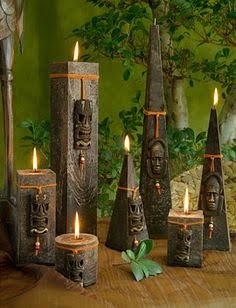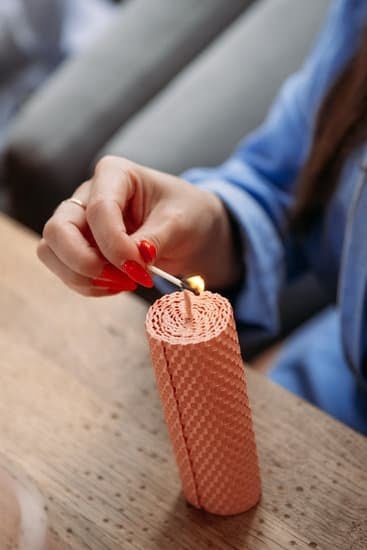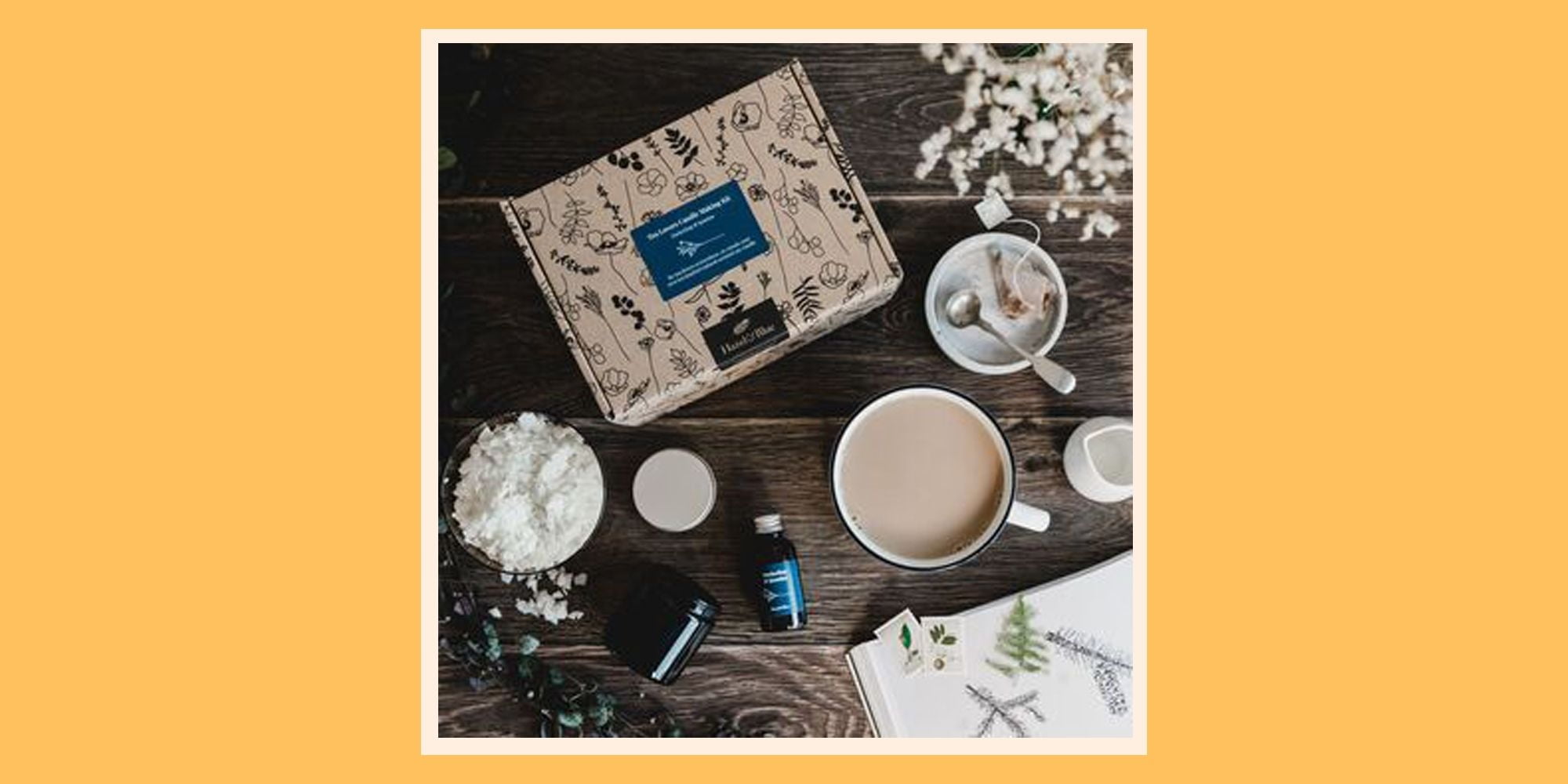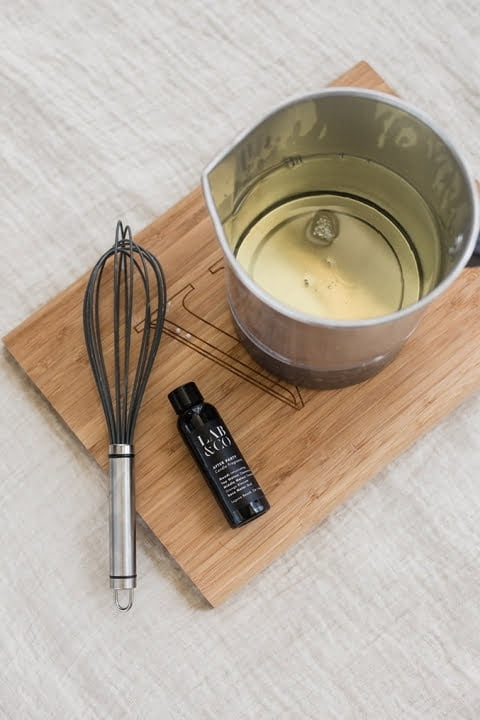The beauty and aroma of a great-smelling candle can bring the perfect ambiance to any home or space. Making candles that smell good also adds an extra element of personalization in addition to providing a unique gift for friends, family, or significant others. The following paragraphs will provide tips on how to make the best candles that have both great smells and superb visual appeal.
The first part of making candles with scents is to identify the desired fragrance. It is important to find a scent that does not overpower the candle but instead complements it. When looking for fragrances, avoid fragrances that contain synthetic chemicals as natural essential oils often deliver better quality smells than artificial fragrances.
Additionally, these natural essential oils are typically safer for people with allergies or sensitivities to participate in candlemaking activities without being overwhelmed by strong smells. With that determined, the next step is selecting quality waxes specifically made for candles. There are a variety of waxes from which someone can choose from like beeswax and paraffin wax, each has their own benefits depending upon what kind of effect one might be striving for in their candles.
The final piece of creating amazing scented-candles is proper technique when adding the fragrance oil into melted wax. Fragrance oils should always be added slowly and gently into melted wax – this method helps disperse the scent more evenly throughout the blend while avoiding accelerated evaporation which could cause an imbalance in smell levels throughout multiple batches of candles made during a session.
Additionally, cold scent throw techniques can be used as well; this involves adding cooled melted wax to measured amounts of fragrance oil at room temperature, then allowing natural heat generated by stirring and emulsification will create easy blending without risking burning off most of the scent before it has had a chance to properly mix with the wax.
Creating candles with delightful smells can be both therapeutic in practice and enjoyable when lit – making them perfect gifts or equally beautiful decorations for any home or office setting. It just takes some patience during trial-and-error attempts until you become familiar with what types of fragrances cater best towards your desired effects and aesthetic outcomes.
What You Need
Making your own candles can be a fun and rewarding experience. Here are all the supplies and tools you’ll need to get started:
- Paraffin wax
- Cotton wick
- Fragrance oils or essential oils
- Candle dye if desired
- Double boiler or microwavable container
- Pouring pitcher or Pyrex measuring cup (glass)
To create a richer scent, consider adding scent additives to your candle recipe such as beeswax, cocoa butter, coconut oil, shea butter, apricot kernel oil or vitamin E oil. You may also want to invest in wax thermometers and other candle-making tools depending on what type of candles you plan on making.
Additionally, you will need candle molds, embeds like flowers or decorations that fit into the mold and a stand to hold your poured candles. Once completed these items can be secured with holder glue or melted wax.
To further personalize your scent blends you can use clays like kaolin, bentonite clay and activated charcoal which will absorb fragrance oils without melting. This will help reduce frosting and maximize hot moisture release when burning.
Pouring craft sticks will help keep your surrounding area neat when pouring out excess wax from containers. Slotted spoons are ideal for stirring and manipulating embeds while keeping melted wax off fingers. An inexpensive candle making kit is a great starting point when it comes to getting all of the supplies needed as most kits come preloaded with basic instructions for beginners.
Choosing a Scent
When making candles with essential oils, there are many different scents to choose from, making it possible to create a unique combination for your candle. Essential oils come in an array of different scents, and they can be used in combination with other colors and materials in order to create a one-of-a-kind candle.
One popular way of creating custom combinations is to combine essential oils like lavender and rosemary, for a lavender-rosemary scent. By combining two or more different oils together, you can create unique custom fragrances that will have everyone asking what the secret ingredient is.
For certain types of candles, essential oils are an ideal choice because they allow the wax to retain its scent even after the burning process is complete. When using synthetic scents, the scent dissipates quickly when used as a candle wax additive because it does not bind well to the natural wax.
Whereas essential oil additives absorb into the wax easier and last longer due to their stable compound structures. This makes them an ideal choice for those looking for a stronger lasting smell from their candles.
Using essential oils also allows users to control how strong or light their desired scent will be without risking irritating fragrances overpowering the room upon burning. As such, some common practices that can improve scent control include:
- Careful consideration of color/dye concentration
- Selection of proper wick size
- Proper packaging
- Adjustments of scent addition volumes
- Maintenance/care according to industry standards (i.e clean storage area)
The Candle Wicking
When making candles at home, it is important to choose the right wick for the job. There are four main types of candle wick material – cotton, paper-core, zinc core and hemp – each with its own distinctive qualities. Cotton wicks have a tendency to burn slowly and produce small but steady flames, making them an ideal choice for aromatherapy candles which rely on scent retension.
By contrast, paper-core wicks provide quick burning patterns and large flame sizes making them perfect for fragranced candles. Zinc core wicks burn best in colder temperatures – ideal for outdoor use where weather might be a factor – and hemp provides a no-smoking option which relies on micronised fibres to encourage more even burning.
Using Essential Oils
For oils to be used in scented candles they must be safe for use within a wax or gel medium and not contain any solvent that would inhibit wax quality or cause instability when blended with other ingredients. Essential oils extracted from plants like lavender, peppermint or citrus are considered burn-safe when used where the concentration of oil does not exceed 7%.
Adding essential oils to container candles causes problems as these can potentially leach through the side walls resulting in staining of surfaces and damage when exposed to direct heat sources.
Safety Considerations
The combination of combustible materials and naked flames all mean that safety should always remain paramount whenever making scented candles at home. Always consult local guidelines as some regions may require special health & safety regulations depending on the type of material chosen (wax, gel etc) An understanding of basic chemistry principles around melting points, evaporative ratios etc should also be factored in if attempting complex aromatic blends outside of standard pre-manufactured aromas.
Adding the Wax
The first step in making candles that smell good is to measure the wax. There are several types of waxes available for candle-making, including beeswax, soy wax, and paraffin. The type of wax needed will depend on the type of candle you’re making and its intended purpose. Paraffin is a common choice for those new to making candles.
To measure the wax, start with the recommended amounts specified by your recipe. When melting the wax in a double boiler or pot of boiling water, it is important to continually stir it for even melting and ensure no lumps form – you may also remove any visible components from the container before use.
Once melted, wait for the temperature of the wax to drop slightly before mixing in essential or fragrance oils. Essential oils contain molecules which evaporate sooner than other ingredients causing an enhanced scent throw; whereas fragrance oil has more staying power but can be overpoweringly aroma-filled if overused.
How Much Fragrance Oil To Use
- Most recipes will specify a certain amount of essential or fragrance oil needed depending on the type of candle being made and desired intensity of aroma.
- An average amount used per pound of melted wax when using fragrance oils alone is about 0.7 fluid ounces.
- For most projects, we recommend using 0.5 fluid ounces per pound when doubling up on both essential and fragrances oils.
- Keep in mind that adding too much oil may leave your wick saturated with excess oil which can lead to poor burning performance.
- It’s best to err on the side of using less oil rather than more.
Melting & Pouring the Wax
Candle making is an incredibly enjoyable hobby, especially when you have mastered the basics and are ready to experiment. Making candles that smell great adds a unique element that makes candles both visually appealing and aromatic.
The key to success is in understanding the right temperatures for melting wax and properly dispersing essential oils and/or fragrances. Working with wax is very similar to cooking; if the temperature is too low, the scent won’t disperse throughout the entire candle and if it’s too high, it can ruin some of the flavorings being used.
Once your wax has melted, ideally at around 75-80 degrees Celsius, you then need to master your pouring technique in order for your scents to be dispersed throughout. A steady downward stream into each mold should do the trick, once finished pour any excess off around the rim of your containers.
Tips for Optimal Scent Dispersal
- Melt candle wax at temperatures between 75 – 80 Degrees Celsius.
- If using essential oils or fragrances dilute them first in a small amount of dipropylene glycol before mixing into melted wax.
- Pour slowly downwards into molds for smell distribution.
- Rim mold with excess wax to create a stronger scent holding layer.
Finishing Touches
Attaching Labels and Decorations
Labels and decorations are a great way to add a little something extra to your candles and make them look even more attractive. You can design labels online or use a home printer, but if you want to get the best results, getting printed labels from specialty stores might be the best option.
Get creative with what you can attach the label with; it could be as simple as using glue dots or something fancier like ribbons, decorative strings, or stickers. The possibilities are endless.
Decorative Ribbons and Strings
You can also easily dress up your candles by adding decorative ribbons or strings around it. Not only does this give your candle an eye-catching look, but it also doubles as a safety measure in case of any accidents.
Different types of fabric ribbon give each candle its own unique style, so pick whichever shading you’d like that stands out against the wax. If you don’t have any fabric ribbon on hand, colored jute string may be a suitable alternative.
Candle Gift Boxes and Wrapping Paper
Candles make great gifts for special occasions like birthdays, anniversaries and holidays. To take it one step further in terms of presentation and showing your recipient how much thought you’ve put into their special gift, consider buying some attractive gift boxes or wrapping paper specifically designed for candles. This definitely takes the presentation up a notch over plain paper packaging; plus these come in various sizes depending on how many candles you plan to give away.
Conclusion
Making candles that smell good is an enjoyable and rewarding hobby that can add a beautiful touch to any home. While there are many types of wax, wicks, and fragrance oils to choose from, it is important to be aware of the potential hazards that come with candlemaking.
By purchasing candle supplies from a reputable source and following the safety instructions provided you can keep yourself safe while creating lovely scented candles in your home. Unfortunately, not every scent will react the same way when mixed with candle wax so it is wise to practice trial and error in order to achieve the desired result.
Using the right type of wax for your intended scent is an important step in making great smelling candles. When working with soy wax, beeswax or other natural sources of wax it is important to ensure that all particles such as dirt and other debris have been completely removed for optimal performance.
This process may also include melting down larger chunks of wax at a low temperature or mixing different types of WAS together in order to create unique combinations or unique qualities for specific fragrances.
Increasing wax temperature too quickly could cause discoloration or lack of scent in finished product so patience is key. Always remember to keep children away from your workspace during these types of activities.
Finally, once the desired combination has been made one should ensure they measure out their fragrance oils carefully before adding them into the hot liquid wax mixture. To guarantee maximum scent throw it is recommended that roughly 10% by weight of oil be added but adjustments can always be made depending on desired outcome.
To finish off this process using a high quality wick that has been specifically designed for one’s desired type of wax ensures proper burning which will yield longer lasting candles with even fragrance dispersal and prevent excess smoke build up within ones’ home.
In conclusion, by properly preparing candle ingredients using cautionary measures provided you can create delightful smelling candles sure to please any guest who walks through your doors. With some simple resources such as safety precautions and testing first you can make sure there are no surprises when lighting up your creation.

Welcome to my candle making blog! In this blog, I will be sharing my tips and tricks for making candles. I will also be sharing some of my favorite recipes.





